The Irish Terrier is an amazing dog, behind a rustic appearance which hides high intelligence, courage and unlimited devotion to its owner. For his magnificent sense of humor, impulsive character and seething energy that literally beats the key, he is often called the "red devil" or "sun dog".
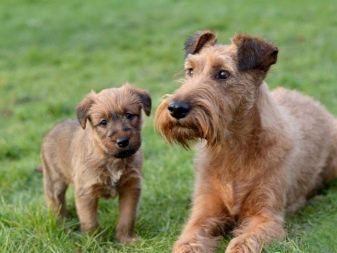
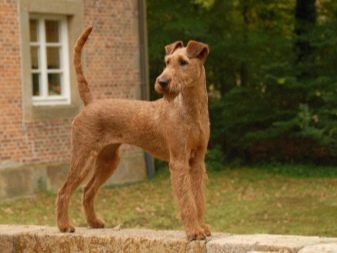
Origin history
The Irish Terrier is considered the oldest variety of terriers that appeared in Ireland. Unfortunately, it was not possible to establish the exact date and place of occurrence of this amazing breed, as ancient sources in the form of manuscripts give very vague information about this. It is only known that The first mention of the representatives of this breed dates back to the time of St. Patrick, namely to 432.
As for the ancestors of the Irish Terrier, then nothing is known about them for certain, although a couple of versions still exist. According to one of them, the progenitors of the dog are wire-haired terriers, which were imported from Britain and used as working hunting dogs. The second version says that the ancestor of the terrier is Irish Wolfhound.
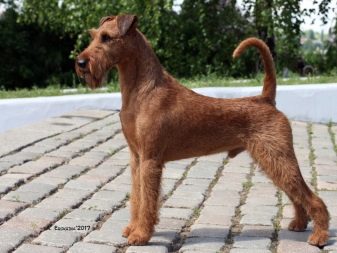
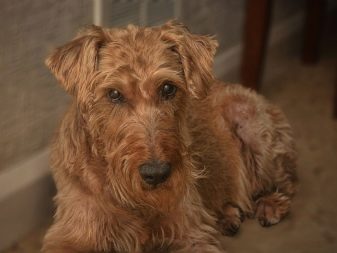
However, modern genetic studies have shown that a black and tan wire-haired terrier is still a closer relative of the "Irish".
The story is also silent about the "author" of this wonderful breed, whose name is still not known to the general public. The first official mention of the "Irish" dates back to 1875when they first appeared before spectators and jury members in Scottish Glasgow, and a year later they already shone in Brighton's rings.After participating in two major exhibitions, interest in the new breed increased significantly, and in 1879 a breed club was created with headquarters in Dublin, Ireland. This contributed to the active development of the breed and made it very popular in the short term not only among hunters, but also among ordinary citizens.
However, Irish terriers of that time were somewhat different from modern representatives of the breed.
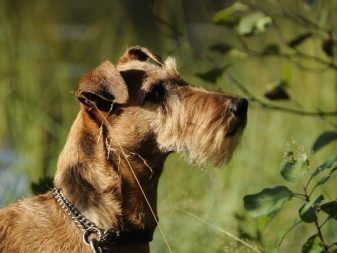
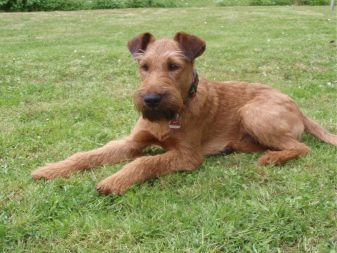
They had rather massive necks and voluminous faces, and their bodies were not at all sporty. In addition, the standard of that time provided for stopping not only the tail, but also the ears.
At the end of the XIX century. "Irish" were recognized by the English Kennel Club and equalized in rights with representatives of other breeds. However, the hidden potential of these intelligent and intelligent dogs was not revealed at exhibitions or hunting, but at the fronts of the First World War. Terriers were used as cohesive and medical dogs, and they also unmistakably found mines, saving thousands of lives.. Unlike other service breeds, the "Irish" behaved very calmly at the front: they were not afraid of explosions and shots and did not run away from the battlefield.
However, a little later, from about the 20s of the XX century, the popularity of terriers went into decline.
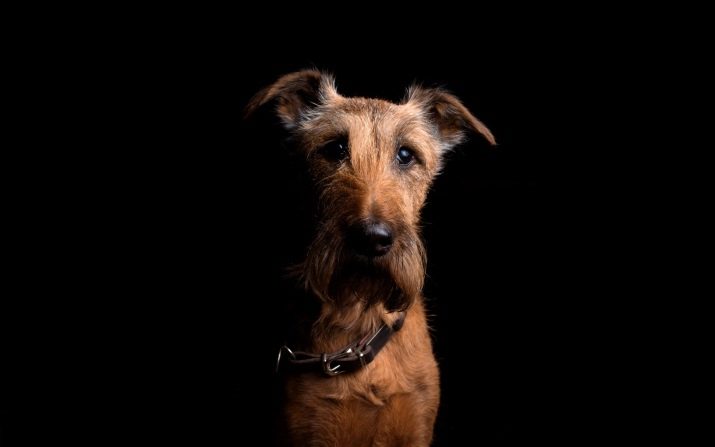
And although ups and downs from time to time occur with absolutely all breeds, the true connoisseurs of the Irish are very concerned about the fading public interest in the “red devils”. In order to turn the tide and draw maximum attention to the breed, in 1933 the owner of the large Oxford Street shopping complex Gordon Selfridge came up with an effective marketing move. He held a large-scale presentation of the Irish Terrier breed, which thousands of people managed to watch. As expected, interest in dogs has increased significantly, the demand for puppies has contributed to the expansion of the breeding base in kennels, and the breed has continued its rapid development.
Irish terriers were brought into the Soviet Union only after the end of World War II in the late 40s.
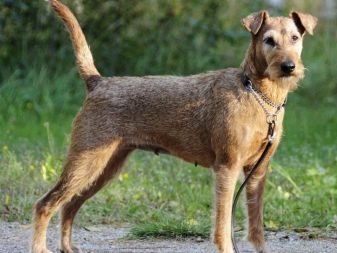
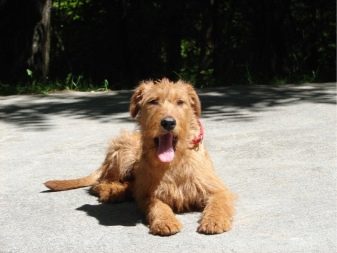
The first was brought a bitch, to find a dog for which the Union failed, and therefore had to use a Kerry Blue Terrier and Welsh Terrier for breeding. The cleanliness of the breed in the Soviet space was threatened, which greatly upset European breeders and connoisseurs of the Irish Terrier. However, in the early 50s, thanks to the nursery opened in the Polish People’s Republic, the situation was successfully resolved. His specialists handed over to their Soviet colleagues several purebred dogs, which were later joined by individuals from the German Democratic Republic.
But, despite the purity of blood, which was periodically updated by imported dogs, the Irish dogs of Soviet breeding were not quoted at international exhibitions.
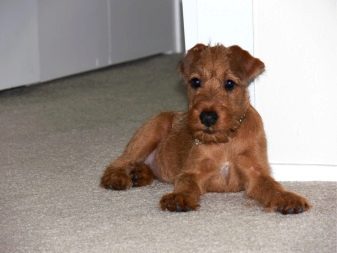
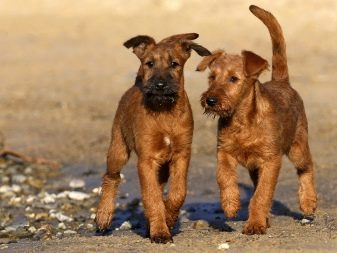
The situation changed only in 1997, when elite British manufacturers came to Russia now. They were actively involved in breeding, thanks to which the number of Irish terriers in our country began to acquire a more sophisticated and close to strict European standards appearance. Dogs began to receive tolerances for international rings and looked pretty good at them.

Currently, the breed is developing at a normal pace, gaining more and more fans around the world. Over time, the purpose of dogs has changed. If earlier they were used exclusively for hunting, where the fearless “Irishman” boldly took out otters and badgers from the shelter, lifted a flock of ducks and tirelessly chased foxes, roe deers and deer, then today the dog is often attracted to the police service, where she helps to unmistakably find narcotic substances.
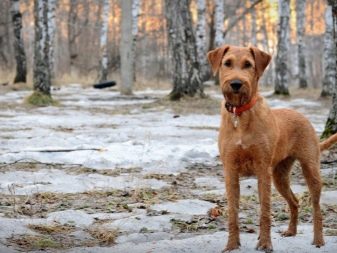
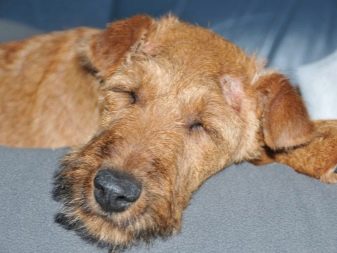
Breed description
According to FCI standard number 139 dated 04/02/2001, the Irish Terrier belongs to group 3 - Terriers, section 1 - Large and Medium Terriers (without working trials) and is used as a universal rural dog, pet, guard a dog with high indifference to pain and danger, as well as a hunter and a dog-dog.
Outwardly, the “Irishman” is a medium-sized dog with a flexible dry physique and the silhouette of an excellent sprinter.
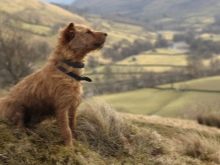
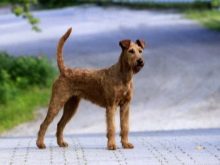
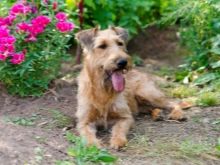
The average height of adults is 42-46 cm, and the weight varies from 11.4 kg in females to 12.5 kg in males. Consider the main characteristics of the breed.
- The animal’s head has a flat skull, narrow enough between the ears and tapering even more in the eye area. The transition between the forehead and the muzzle is very poorly visible and can only be seen in profile.
- The ears are small, have a V-shape, set high and hanging on the whiskey. Moreover, the coat on them is always darker and shorter than on the body.
- The eyes are mostly dark in color, not too big and not convex. Although sometimes there are individuals with yellow eyes.
- The nose, like thin dry lips, always has a black color.
- Jaws very strong and have a slightly elongated structure. This allows the animal to have a reliable grip, which is quite important for a hunting dog.
- Strong and even teeth "Irish" are not subject to caries, with a tightly closed mouth, the upper incisors slightly overlap the lower ones.
- The neck is set high It has an elongated structure, is devoid of suspension and evenly extends to the shoulders. On both sides there is a woolen frill that stretches right down to the ears.
- The back is strong enough smoothly turning into a muscular, slightly raised lower back. Moreover, in females it can be slightly longer than in males.
- Rib cage also quite muscular, but does not differ in large volume and width.
- The tail has a high landing, docked up to 2/3 of the original length and has a hard coat, devoid of suspension and fringe. In countries that support the ban on stopping ears and tails, only dogs with natural tails are allowed to breed and breed.
- Limbs of the "Irish" strong and muscular, distinguished by powerful hips and strong rounded paws. The fingers of the arched type end in black claws, and the pads on them are devoid of cracks and keratinization.
- The wool of the "Irish" has a wire-like structure and forms a kink when it rests on the body. Moreover, the hairs are so close to each other that if a parting is done, the skin will not be visible. As for the length of the coat, on each part of the body it is different: in the jaw, on the sides of the neck and on the front legs it is longer, but without curls and curls, on the legs and body it is medium length, and on the head it is very short, hardly reaching 0.75 cm. A distinctive feature of the breed is the presence of a beard and mustache, which seem soft and silky, but in fact are as stiff as the rest of the coat.
- Color at Irish Terriers varies from copper-red to wheat, and yellow shades are also allowed by the standard, and yellow-red representatives of the breed are not uncommon. All other colors are considered serious deviations and are subject to disqualification. According to the standard, the color of Irish terriers should be uniform on all parts of the body except the ears: they are usually one or two tones darker, which gives the appearance of the dog even more piquancy. The presence of white tan marks on the chest is also allowed.
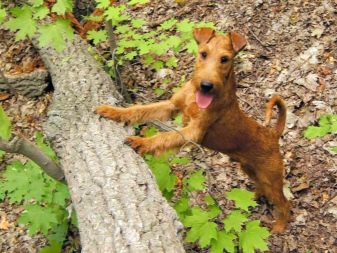
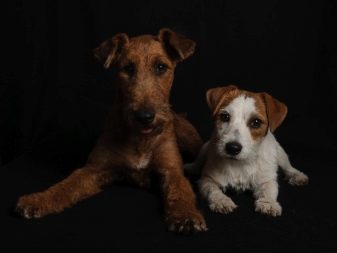
Considering the description of the breed, one cannot but mention disqualifying defects.
These include abnormalities in behavior, such as excessive shyness or excessive aggressiveness, overshot and undershot, pigmentation of the nose of any color other than black, the presence of horny growths and cracked paw pads, as well as testicles that did not descend into the scrotum.
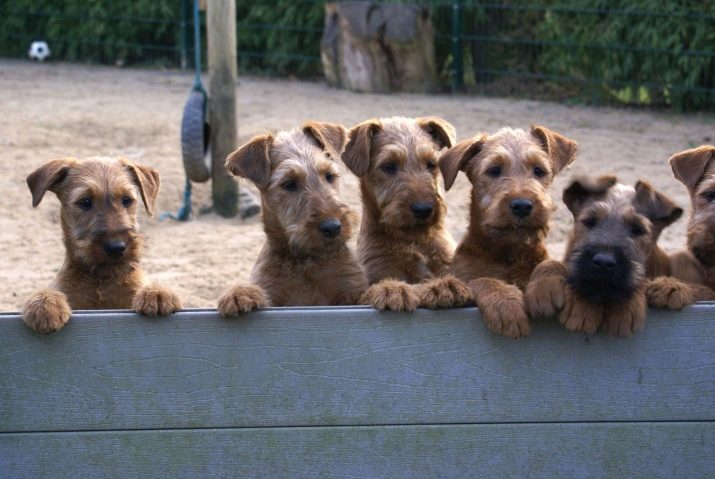
Kinds
The classification of the "Irish" is made only on one basis - the length and color of the coat. According to this criterion, four types of dogs are distinguished.
- Irish Shorthair Terriers They are active tall-legged animals with a strong muscular body and with a solid red or wheat color. Characteristic features of the species are very stiff wool and the complete absence of chest stains. Dogs are very active and need increased physical activity. Of the positive qualities you can specify lack of molting, which allows you to keep such a dog in homes where there are allergies.
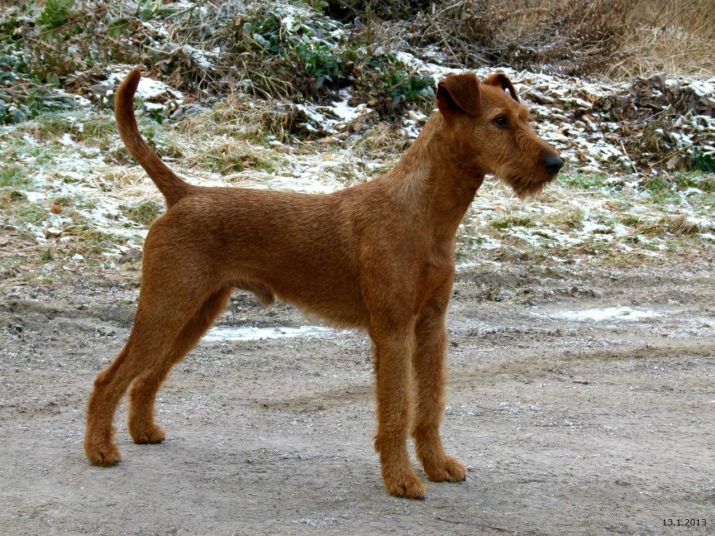
- Irish Soft Coated Wheaten Terriers - These are large and very harmoniously folded dogs up to 50 cm tall. Unlike the previous species, the coat of these animals is soft, silky and pleasant to the touch. It is slightly longer than that of a smooth-haired one, curls slightly and evenly covers the dog's body. A characteristic feature of the species are eyes covered with hair, because of which they are often watery and require increased attention from the owner.
Moreover, soft-haired pets need to be combed daily with special scallops. Otherwise, soft hair quickly rolls into tangles, which are almost impossible to comb.
Puppies of a soft-haired terrier are always born black and only by the age of two acquire a wheat color. Compared to other types of Irish terriers, these dogs are not aggressive and very obedient. They almost never give voice, do not bully on unfamiliar dogs, are very sociable, excellent at training and quickly remember teams.
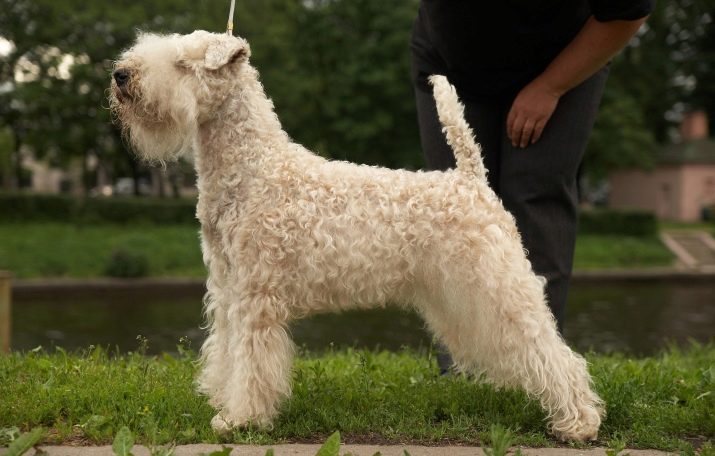
- Irish Wire Terriers they are owners of golden red hard wool, to the touch resembling a wire. It protects the animal well from heat and cold, creating an air gap inside. In addition, such a cover does not let water through and repels dirt. Dogs practically do not fade and have no dog smell, however, they need regular plucking and thinning of their hair - trimming.
Dogs very quickly get used to this procedure and do not experience any inconvenience about this. Trimming noticeably improves the condition of the skin and coat, so it should be done fairly regularly. Unlike wheat terriers, the hair of wire-haired representatives of the breed is not prone to curly and wavy.
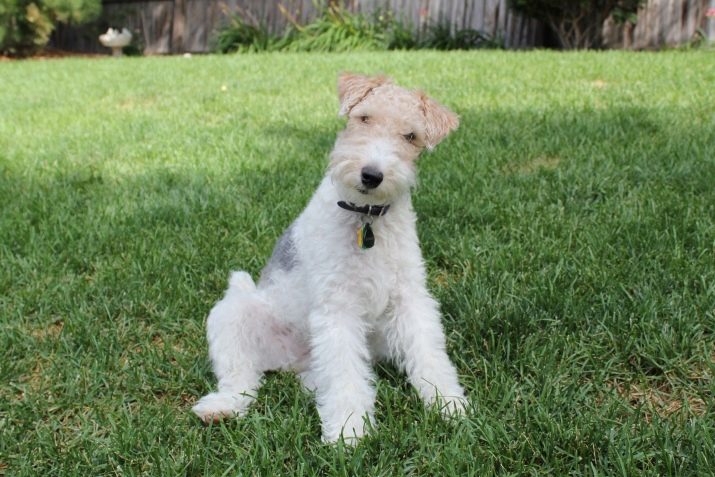
- Irish Blue Terriers, unlike red-haired counterparts, have a thick wavy coat of gray or steel color. The paws and ears of animals are often black, and the beard is much longer than that of red dogs. Blue terriers are distinguished by excellent protective and protective qualities and temperament of real fighters.

Character
Irish terriers are quite impulsive in nature and with unfamiliar dogs can be quick-tempered and aggressive. Due to emotional restraint, the "Irish" firmly established a reputation as squabblers and scandalists, who are not averse to clarify relations even at exhibitions. However, this reaction does not apply to humans. Dog handlers and breeders of the breed note that terriers are very versatile in nature and can harmoniously combine the features of an exemplary hard worker, a mischievous clown and a reliable watchman.
In a word, the nature of a terrier consists entirely of contradictions.
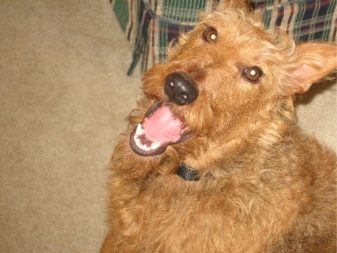
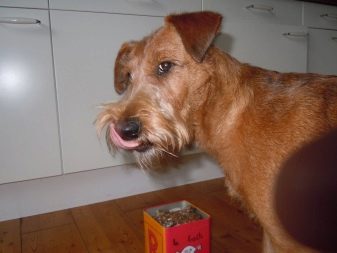
A dog can be ferocious, and after a minute it can be unusually affectionate, it can make people laugh with its tricks, and immediately get offended if it is laughed at, it can enjoy swimming, but does not tolerate walks in the rain.
Despite the inconsistency of character, Irish Terriers have a keen sense of the owner’s mood and have high intelligence. Dogs perfectly understand intonation, know the meaning of a large number of words, have excellent memory and are well oriented on the ground. In this case, young individuals are not averse to a little bullyby pulling a sausage off the table or turning the contents of the cabinet over. Especially they have fun in the absence of owners: gnawed legs of chairs and spoiled shoes are invariable attributes of the growth of these mischievous and moving dogs.

However, with age, they calm down and do not cause material harm to the owners.
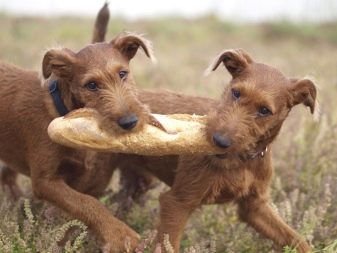

In the apartment, in the presence of the owners, the dog behaves quite calmly, but if the owner invites her to go for a run or a bike ride, they don’t recognize the “Irish”: a sports dog by nature begins to cut circles, have fun and enjoy spending time together and enjoying freedom. With regard to attitudes towards children, then the dog responds with pleasure to outdoor games and fun, but only with those kids with whom he grew up or is just very familiar. He can even endure an accidentally clasped paw or twitching of the tail.
However, you should not test the patience of the "Irish" and it is better to immediately explain to the child that such a dog requires a respectful attitude and will not tolerate bullying.


Life span
"Irish" are distinguished by good health and are practically not susceptible to genetic diseases. Due to the not too heavy weight, dogs very rarely suffer from such a common dog ailment as hip dysplasia, and are not allergic to food. Due to the high resistance of the terrier to various diseases, they are often compared with mongrels: dogs have a strong musculoskeletal system and good immunity. Among the pathologies encountered by the "Irish" hypothyroidism, von Willebrand-Dian disease and hyperkeratosis.
The average life expectancy of Irish Terriers is 13 years.
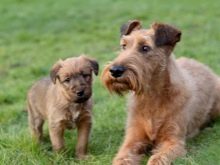
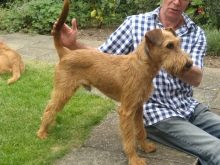
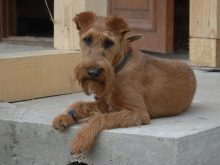
Maintenance and care
The best option for the maintenance of the "Irish" is considered a country house with a spacious plot. A prerequisite is the presence of a fence not less than 2 m high. This requirement is due to the excellent jumping ability of the pet, which can easily overcome the one and a half meter fence.
However, the dog gets used to living conditions quite quickly, the main thing is not to be lazy to walk with him for several hours a day. The only thing that can not be done under any circumstances - is to put the "Irish" on the chain. Unable to move fully and being in a limited space, the dog will become very embittered and become uncontrollable.
As for pet care, it is completely uncomplicated.
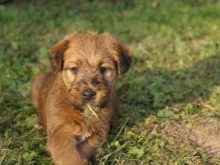
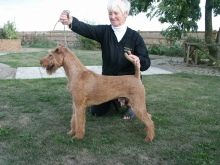
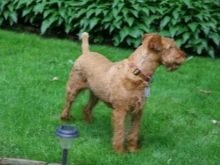
It is enough to trim the dog regularly, and to comb soft-haired individuals daily. For trimming, it is better to turn to the groomer, and not do pinching yourself. Unlike a haircut, this is a rather complex and specific process, which even an experienced master takes 5-6 hours to complete. If it is decided to perform the pinching on your own, then it is better to resort to the help of a trimming scheme, which clearly shows the sequence of the procedure and the rules for plucking wool in certain areas of the body.
The first time the pets are trimmed in 2.5 months, and the legs, mustache and beard are not touched, but only slightly leveled with scissors.

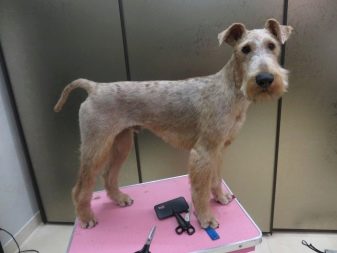
Hair growing in the ear canals must be plucked, thereby ensuring air circulation. The trimming procedure is repeated every 6 months, and in show dogs - every 1.5-2. Before the pinching, the wool is washed, combed well and eliminated from the tangles.
Bathe the Irish» as necessary with special shampoo for wire-haired dogs. Eyes and ears are examined daily, removing secretions with a wet swab. The claws are sheared with a clipper at least once every 1.5 months, and teeth are brushed weekly using toothpastes for dogs and a brush on the finger.
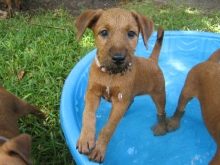
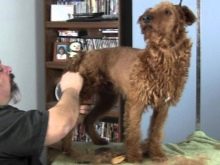
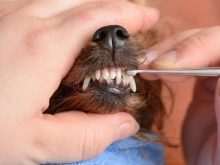
Feeding
When compiling a diet for the Irish Terrier, you should be aware that 70% of the total food should be protein-rich foods. An adult dog should be fed 2 times a day, and in the first half of the day, the portion should be slightly larger than in the second. Puppies up to 3 months old are fed 5-6 times a day, babies 4-6 months old - 3-4 times a day, from 7 months of age terriers are transferred to 2-time feeding.
With a natural diet, half the portion should be lean meat or offal, and the rest should be on porridge (buckwheat, rice or pearl barley) and vegetables, flavored with a spoon of vegetable oil.
A couple of times a week, the “Irish” needs to give eggs and marine low-fat fish, pre-cooked and cleaned of bones.

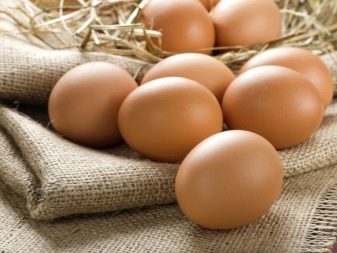
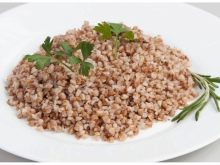


From fermented milk products to terriers you can give cottage cheese and sour cream with a low percentage of fat content. As an additive to natural nutrition, bone meal, fish oil and vitamin-mineral preparations should be used.
If you decide to feed the "Irishman" with industrial food, then any premium composition is suitable in which all the substances necessary for the dog's body are in the right amount and acceptable combinations.
With any type of food, the pet should have round-the-clock access to fresh drinking water.
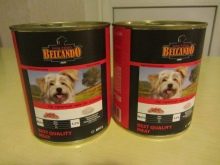
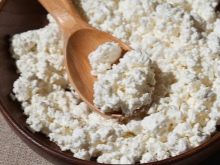
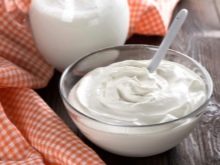
Parenting and training
“Irish” are distinguished by impressive training abilities, however, not everyone is suitable as the first dog. This is due to the fact that standard classes are not suitable for them: these dogs will train only if they are very interested in this process and want to do it themselves. Therefore, the training of terriers should be carried out in a playful way and based on the natural curiosity of the pet.
The main thing in this matter is not to flirt and do not turn relations with a dog into familiarity. Terriers are inclined to leadership and will not mind competing for it with the owner.
The best option is to entrust the training of the "Irishman" to a professional who, taking into account the future purpose of the dog, will select the right program.
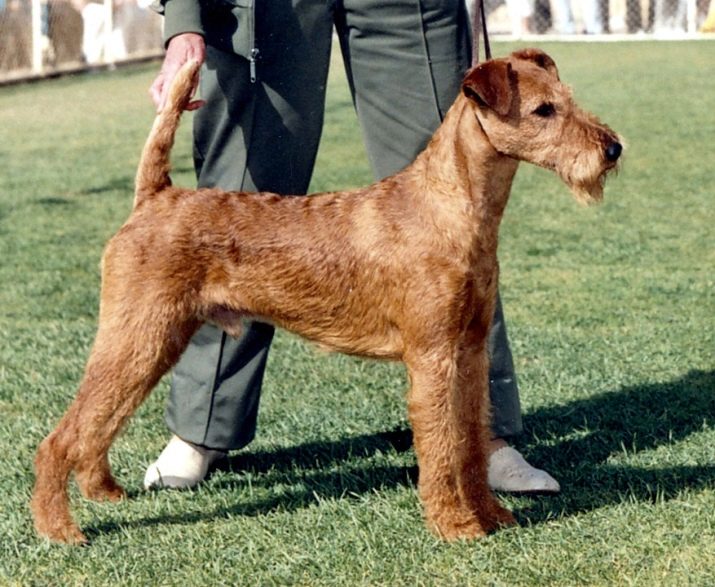
Terriers show excellent results not only in OKD, but also in search and rescue and guard-guard courses. In addition, with the "Irish" you can engage in coursing, skijoring, dog-frisbee and agility, as well as drag them to the bloodstream and teach them how to fish out of the pond and aport the black bird.
However, no matter what type of activity the dog learns, it is better for the lessons to be individual. In group training, the “Irish” often do not show any results at all, while with a personal approach they grasp everything pretty quickly.
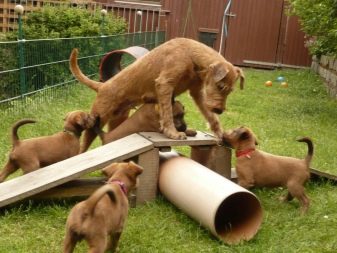
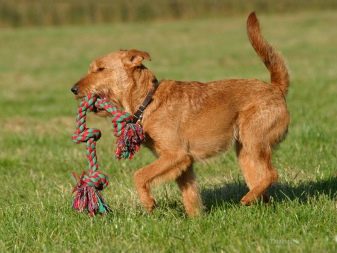
Owner reviews
In general, the owners of Irish terriers speak very well about the breed. However, many of them note some problems in the education of adolescent dogs, which are the desire of the pet to establish leadership over the owner. Puppies, looking into the eyes of the owner, begin to do forbidden things, and neither slaps nor shouts absolutely help. By the age of 7-8 months, or even by the year, most of them calm down and establish a warm, trusting relationship with the owner. Mentioned in the reviews and about the "distribution of apartments", which suit the pets in anticipation of the owners: they gnaw shoes, spoil furniture legs and gnaw wallpapers.
Some puppies, most often boys, do not go to the toilet outside for a long time and up to 7 months they relieve the need at home.
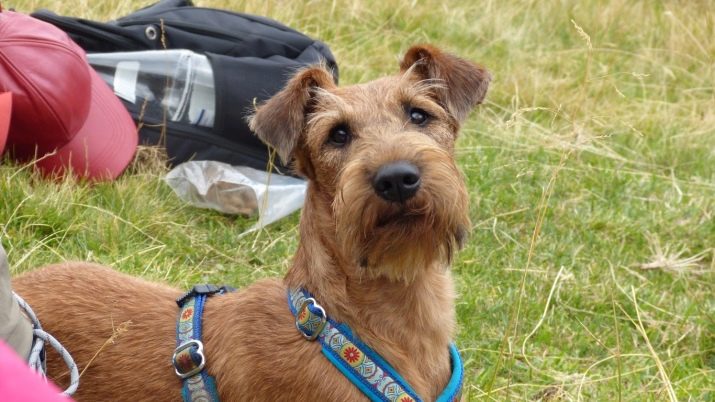
Many owners blame the fact that the dog on a walk behaves like a vacuum cleaner, picking up everything edible and inedible on its way. However, by the year this habit disappears and no longer bothers the owners. Of the positive qualities noted sharp mind, comprehension and the ability of the pet to adapt to the mood of the owner. It also speaks of the security and watchdog qualities and the unlimited devotion of the “Irishman”.
About the Irish Terrier, see below.








































